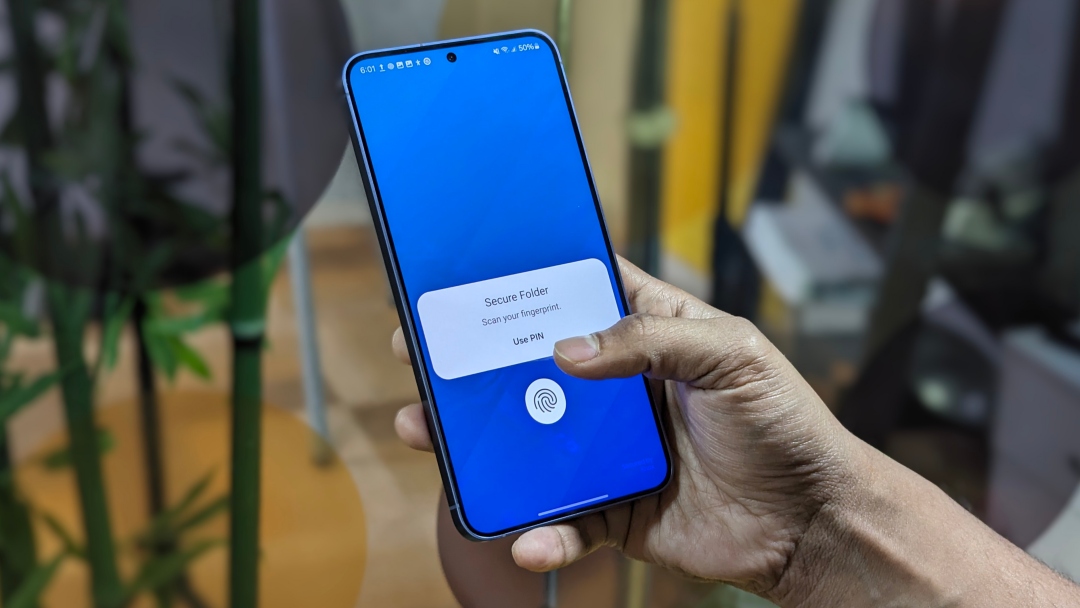[ad_1]
Smartphones are equivalent to personal data lockers these days. They hold messages, photos, work emails, and apps, including financial, shopping, and more. If someone you don’t trust gets a hold of your phone, it’s bad news. Having a lock screen password helps, but you can also lock specific apps on your Samsung Galaxy phone. Let me show you how.
Why Lock Apps on Your Samsung Phone
You may want to lock apps on your Samsung phone for various reasons, like:
- Social media, banking, photo gallery, email, and other apps have sensitive information and data.
- Kids are curious, and while exploring your phone might unintentionally send gibberish messages or emails to your contacts.
- If your phone is shared among family members, locking apps allows you to control who can access what without completely restricting access to everything on the phone.
- App locks protect against malicious software and snoopy individuals, even if they get hold of your unlocked phone or know your password.
While Samsung phones don’t have a built-in app lock feature, they provide similar functionality through the Secure Folder. If that isn’t what you’re looking forward to, you can also explore third-party app lockers.
Lock Apps Using Secure Folder
Secure Folder is a secure, password-protected space on your Samsung Galaxy phone to store your sensitive photos, videos, and apps – any data you want to keep private.
Think of it as a separate, hidden phone within your phone where you can have different apps and data that won’t appear anywhere else on your device. It is powered by Samsung Knox which encrypts and protects all your data.
You can protect Secure Folder with a PIN, pattern, password, or fingerprint. To lock an app on your Samsung Galaxy phone, create a Secure Folder and add the app to it. Here’s how:
1. Open the Settings app on your Samsung phone.
2. Scroll down and tap on Security and Privacy > More Security Settings.
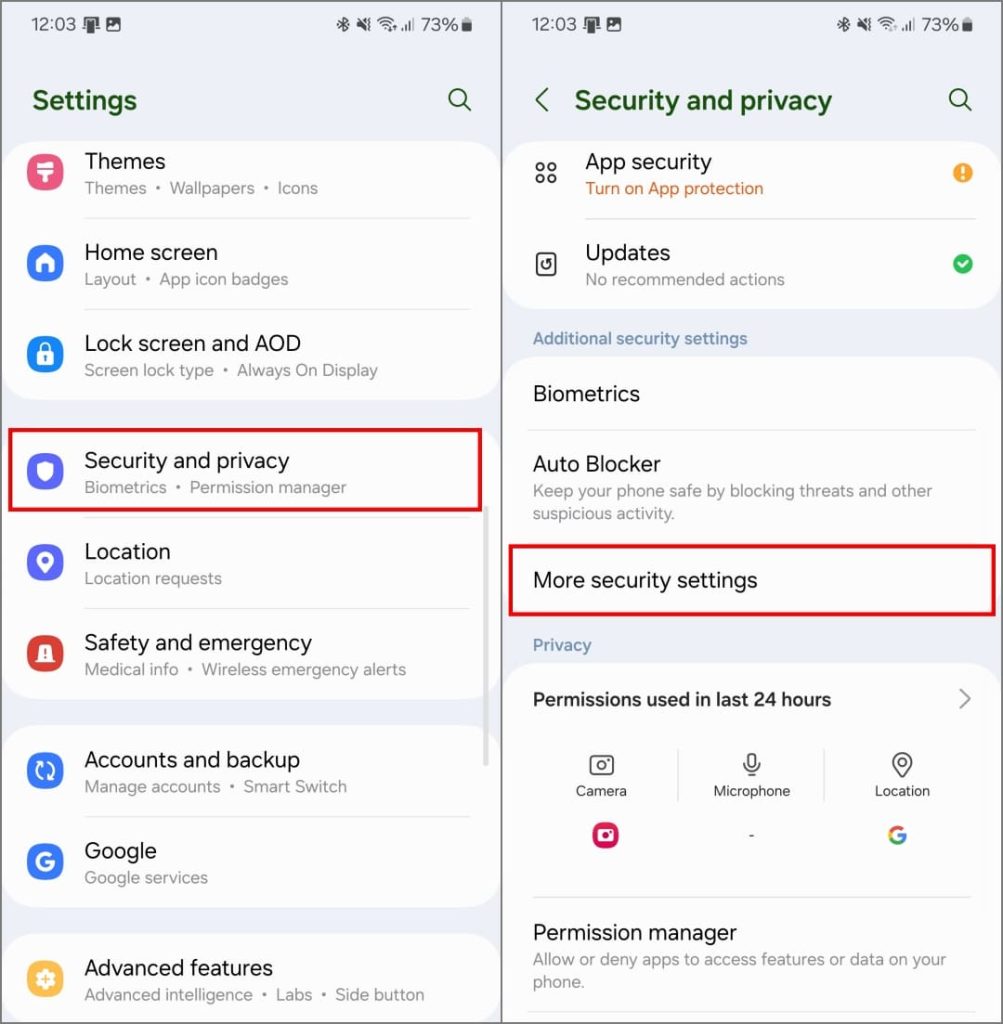
3. Tap on Secure Folder > Continue. Sign in using your Samsung account if you haven’t already.
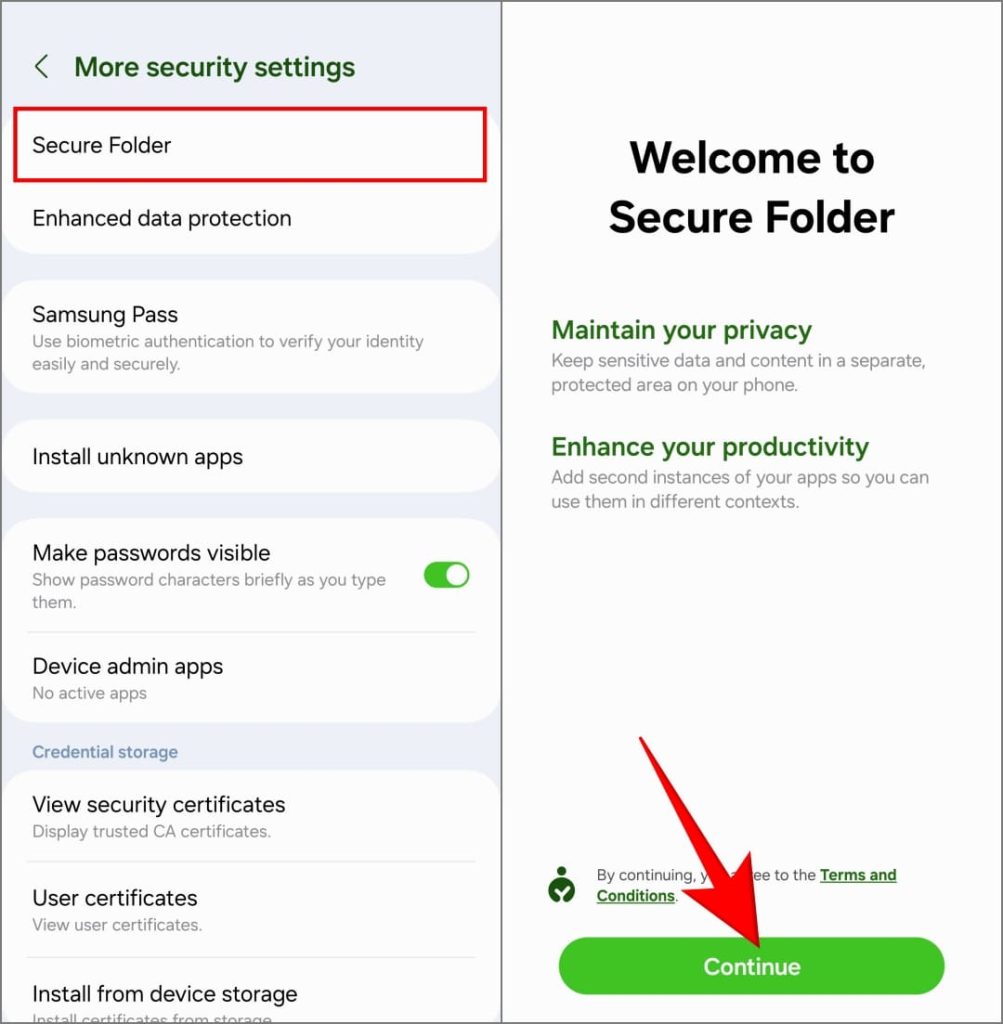
4. Grant all the required permissions. Wait for it to create the secure folder.
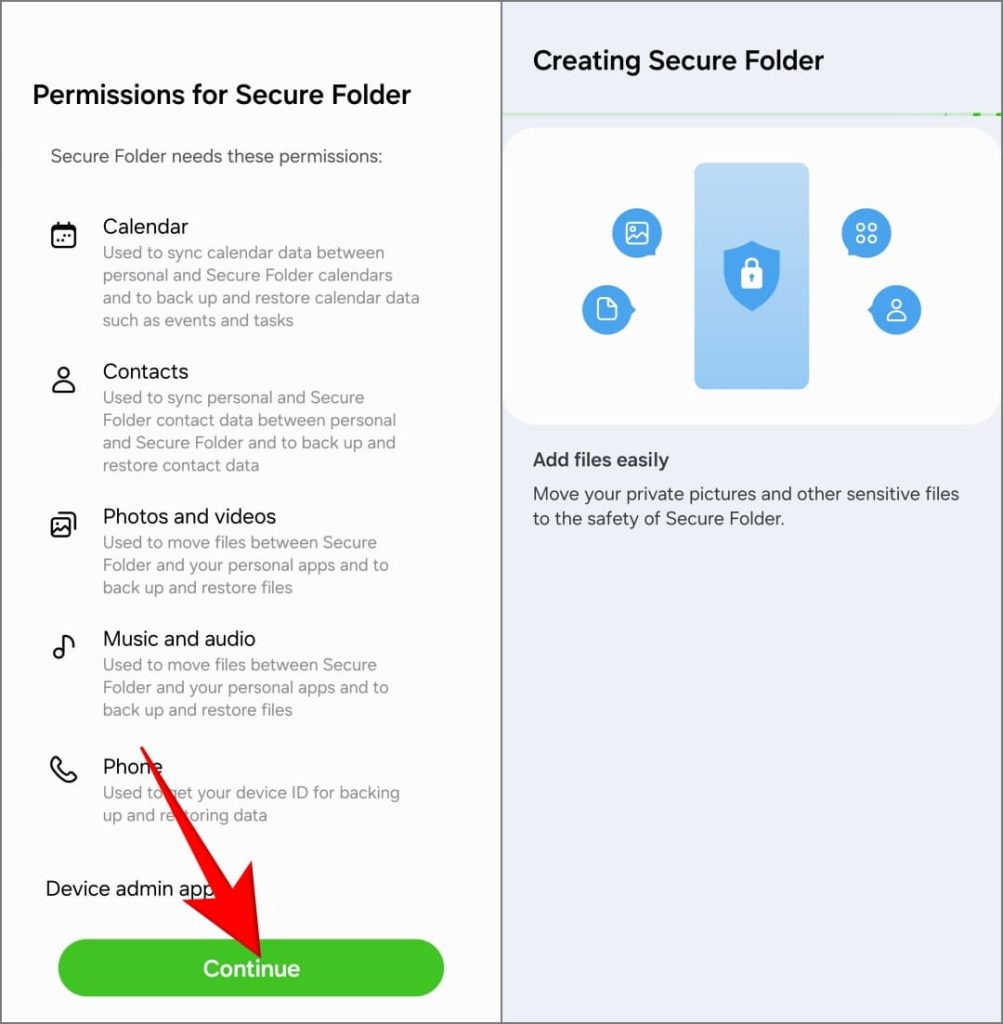
5. Choose your preferred locking method – you can use a fingerprint, PIN, pattern, or password.
Remember if you forget the PIN or password, you’ll need to uninstall Secure Folder and all your data will be erased. If that worries you, toggle on Reset with Samsung account.
6. Once you’ve set a password, tap Next. You’ll land inside the Secure Folder.
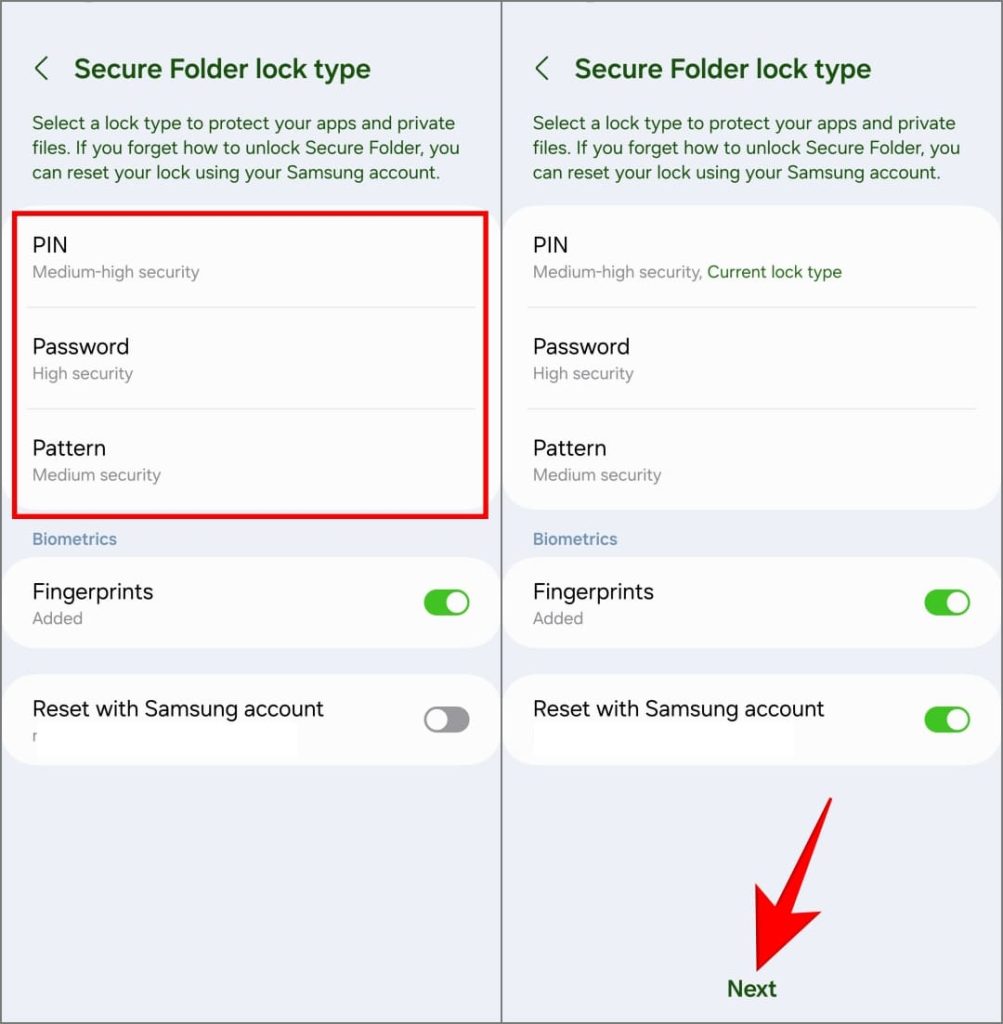
7. To install an app inside Secure Folder, tap the plus icon (+) on the top right.
This will give you three options: add an app that’s already installed on your phone, download a new app from the Google Play Store, or download a new app from the Galaxy Store. Select your preferred method to proceed.
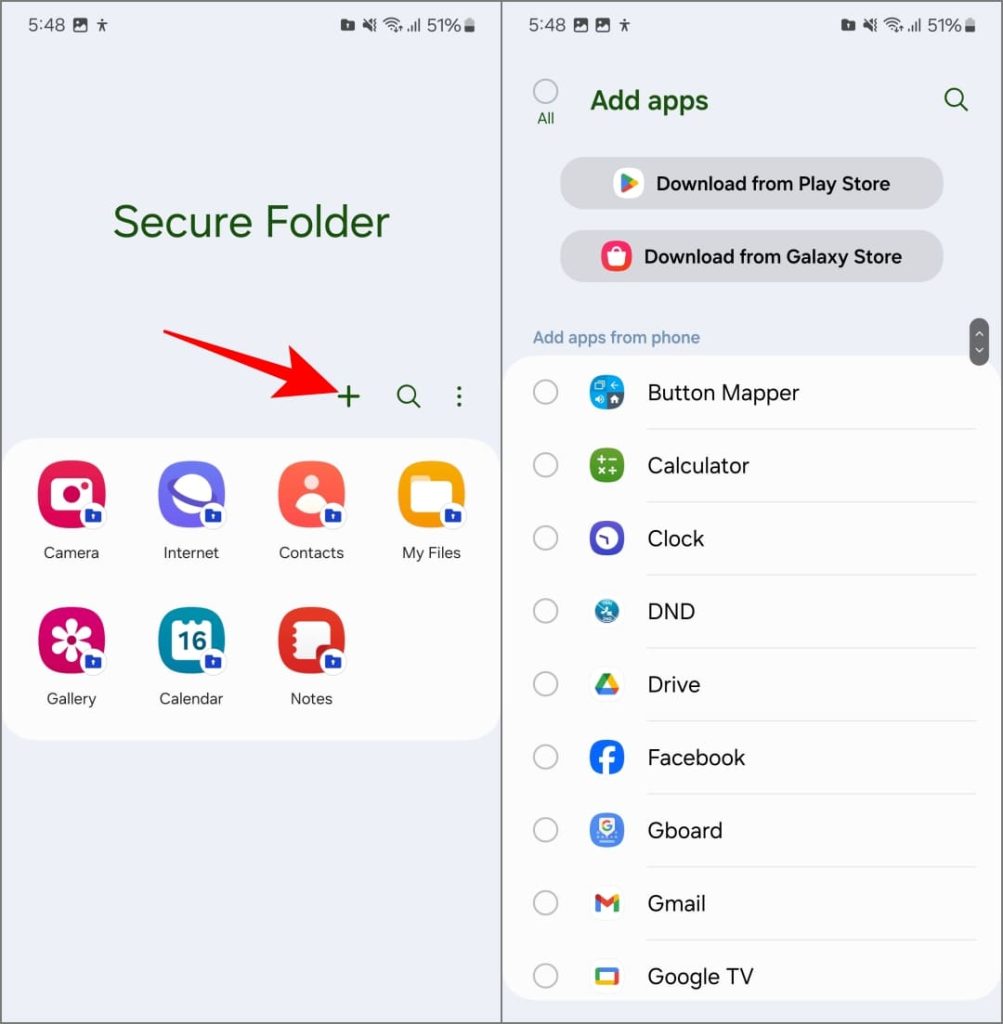
Once you’ve installed apps and added your data, exit Secure Folder and lock your phone. The next time you unlock your phone and open Secure Folder, you’ll be prompted to provide your fingerprint or password.
That’s all there is to it! Now you can store private photos and videos in Secure Folder’s gallery app, protect sensitive documents in its files app, and even maintain separate copies of social media apps like Facebook, Instagram, or Snapchat.
These remain hidden from others, accessible only by you with your fingerprint or password.
Don’t Forget to Hide the Secure Folder
Having Secure Folder app icon visible on the home screen or app drawer can invite obvious curiosity. Thankfully, Samsung allows you to hide it from the view.
To hide the Secure Folder, open it, and tap three dots on the top right. Select Settings and toggle off Add Secure Folder to Apps screen.
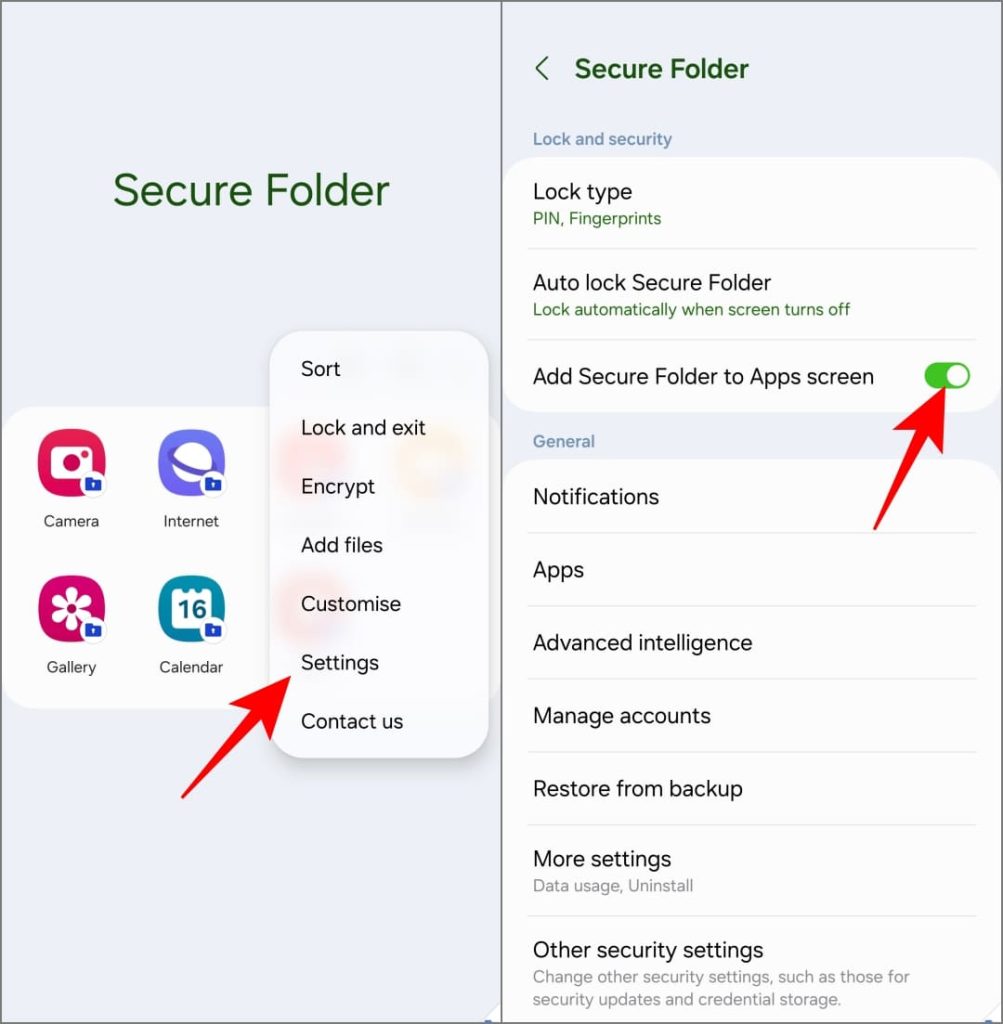
Secure Folder will no longer appear in the Apps Screen (app drawer). You can access it later through Settings. Ensure to check other tips to use Secure Folder on your Galaxy phone.
Don’t Like Secure Folder? Use a Third-Party App Locker
Older Samsung phones could use S Secure to lock apps. This isn’t possible on newer phones. Hence, we’ll use the Norton App Lock – a safe and reliable third-party app to lock apps on your phone. Here’s how to use it:
1. Download Norton App Lock from Google Play Store on your phone. If it says “This app isn’t available for your device,” download and install the APK manually.
Download: Google Play Store | APKMirror
2. Open the app, tap Agree & Launch, and grant permissions to display over other apps and show notifications.
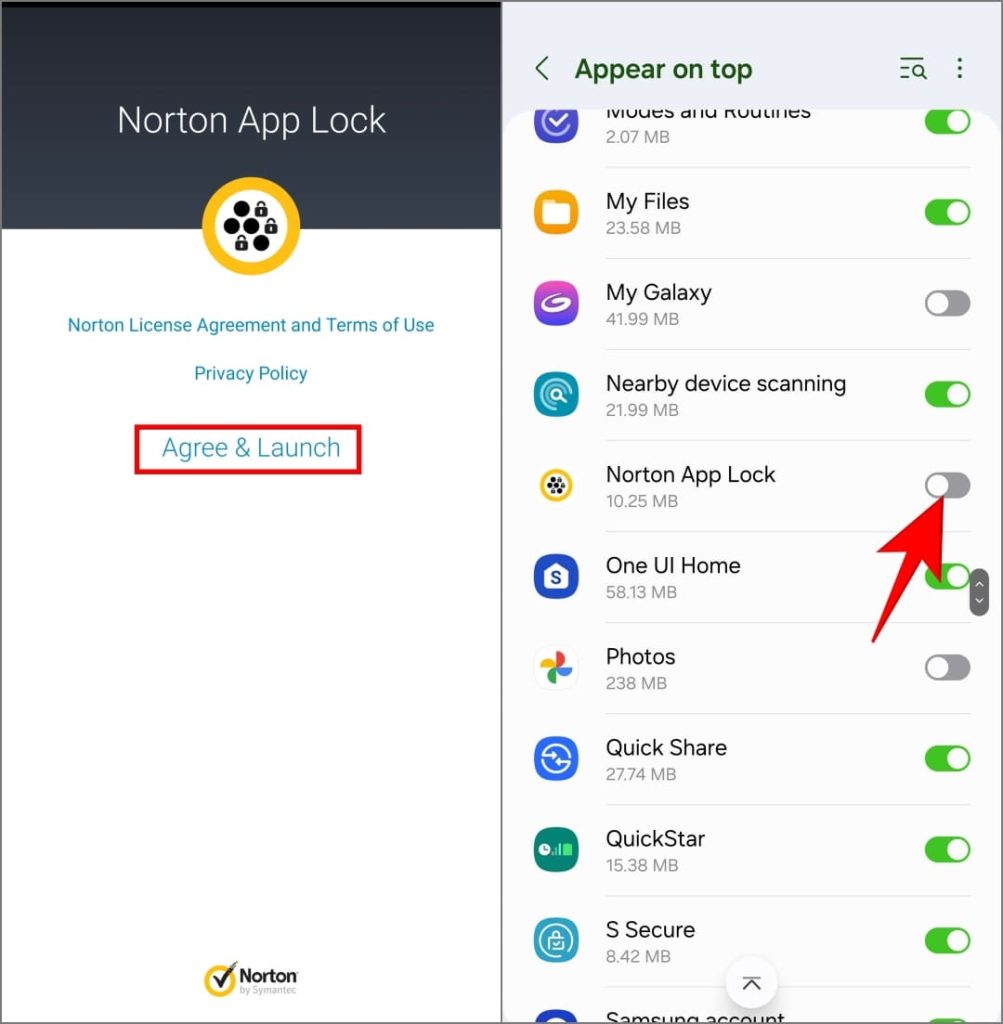
3. Furthermore, follow the on-screen instructions to allow accessibility access for Norton App Lock Service.
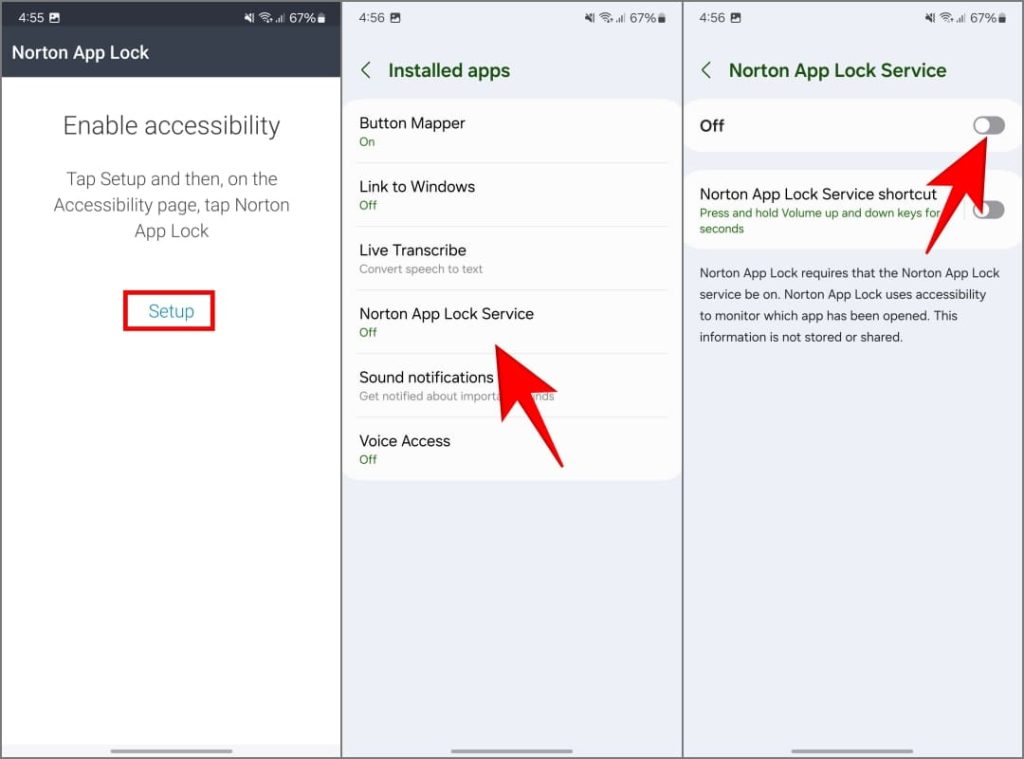
On Android 13 and 14, you might encounter a ‘Restricted setting’ error when doing so. Here’s how to bypass that restriction.
4. Next, choose your PIN or pattern. Then, choose a Google account to help reset the passcode if you forget it.
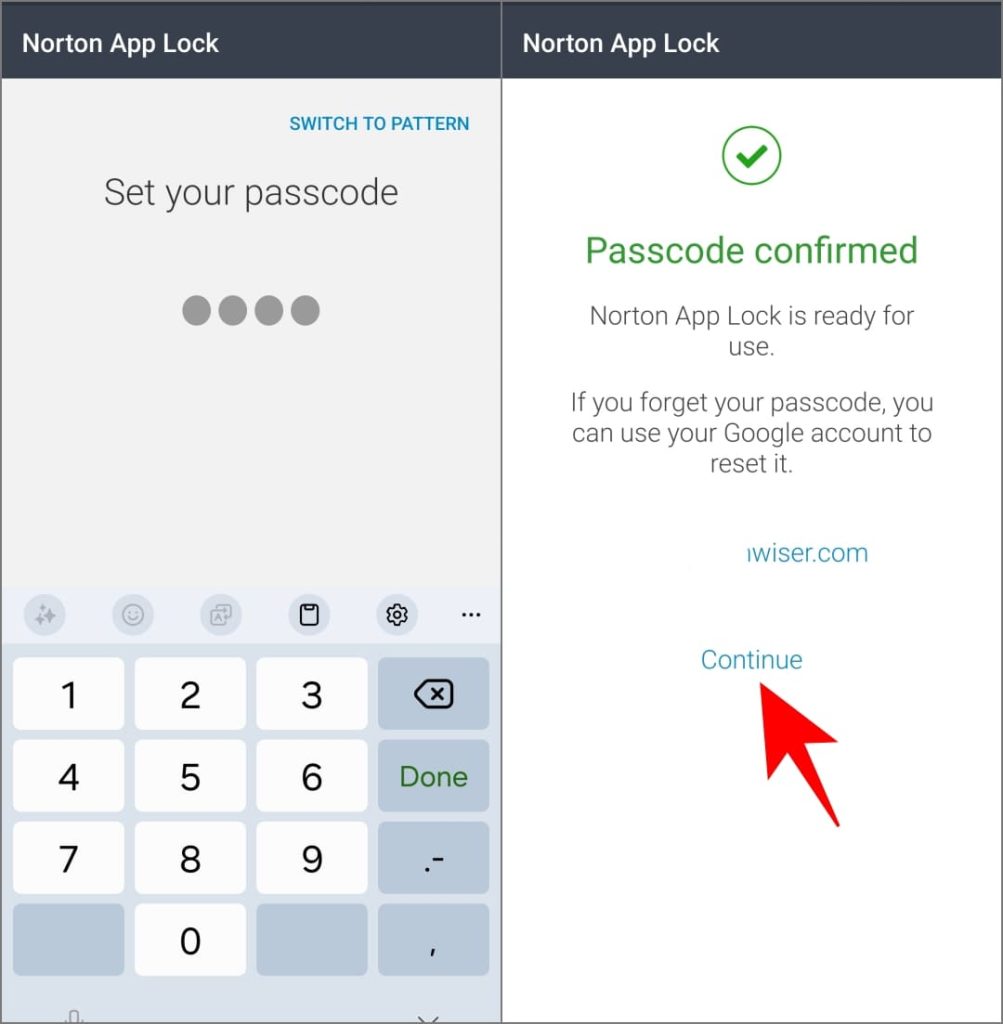
5. Select the apps you want to lock and you’re good to go.
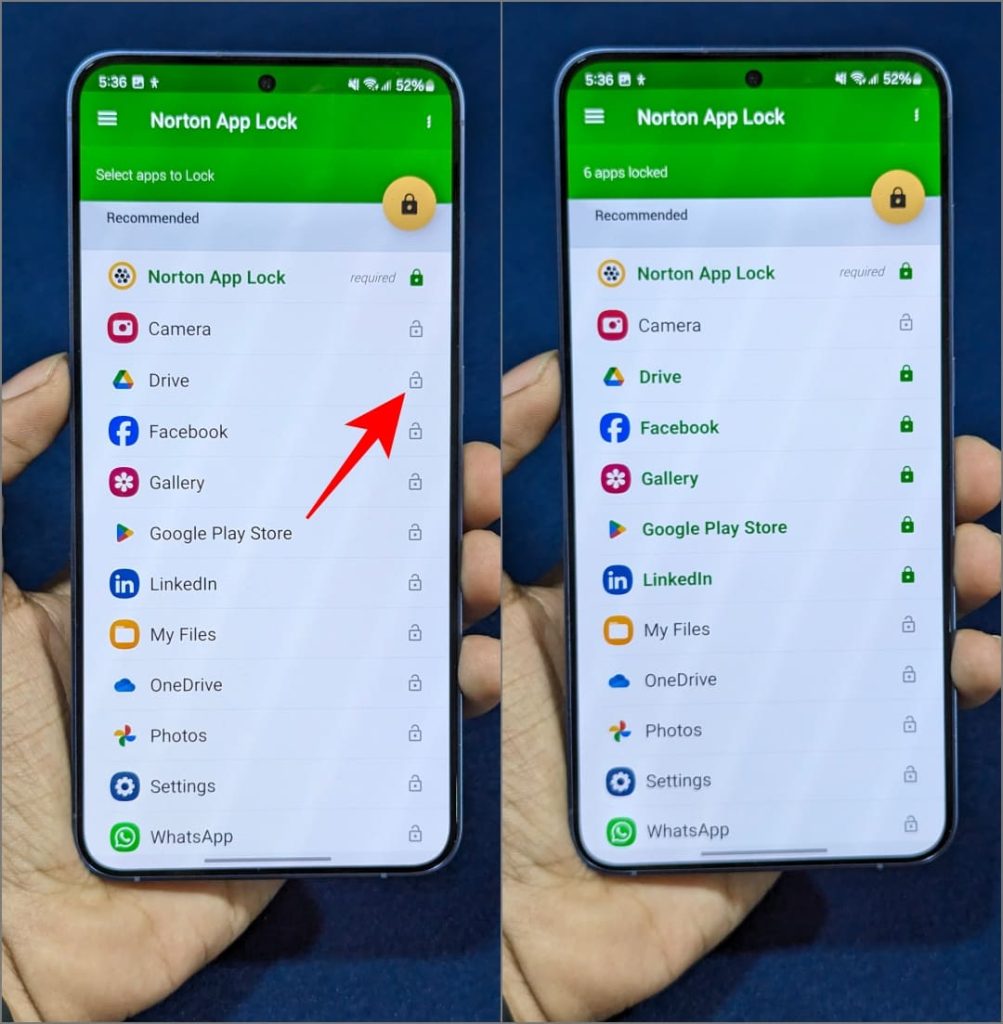
When someone tries opening one of the locked apps, Norton will appear on top of it asking for the password, thereby blocking them from accessing your private apps.
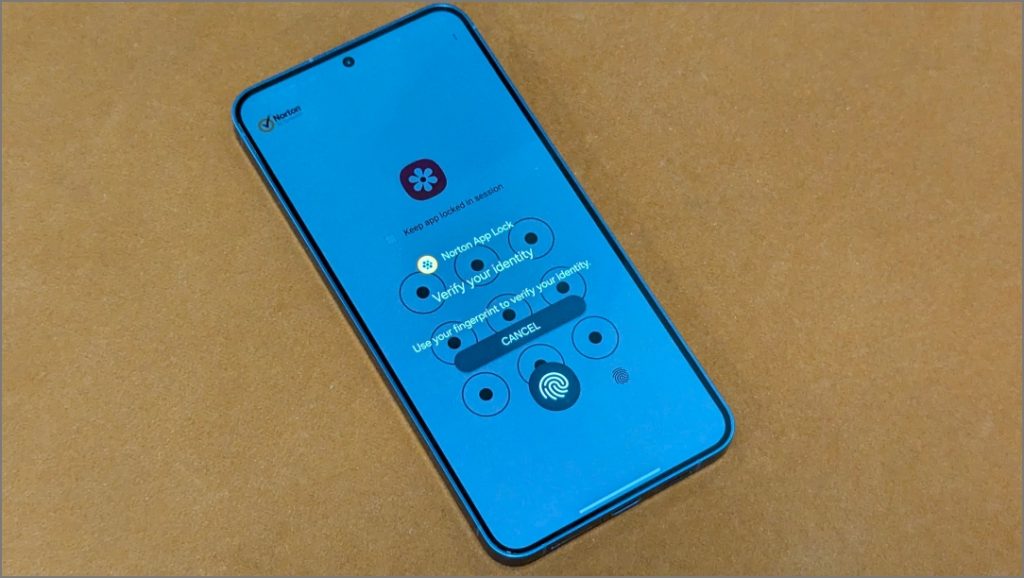
To prevent others from uninstalling Norton App Lock and gaining access to your phone’s apps, open the hamburger menu and tap on Activate Device Administrator.
Protect Apps and Data on Your Samsung Phone
This is how you can lock apps and prevent your friends and family from snooping on your data on the Samsung Galaxy phone. Samsung’s Secure Folder is a great way to do this — you can protect data saved within these apps in a sandboxed environment. But again, if you prefer to keep things simple, you can always use third-party app locker apps.
[ad_2]
Source link
